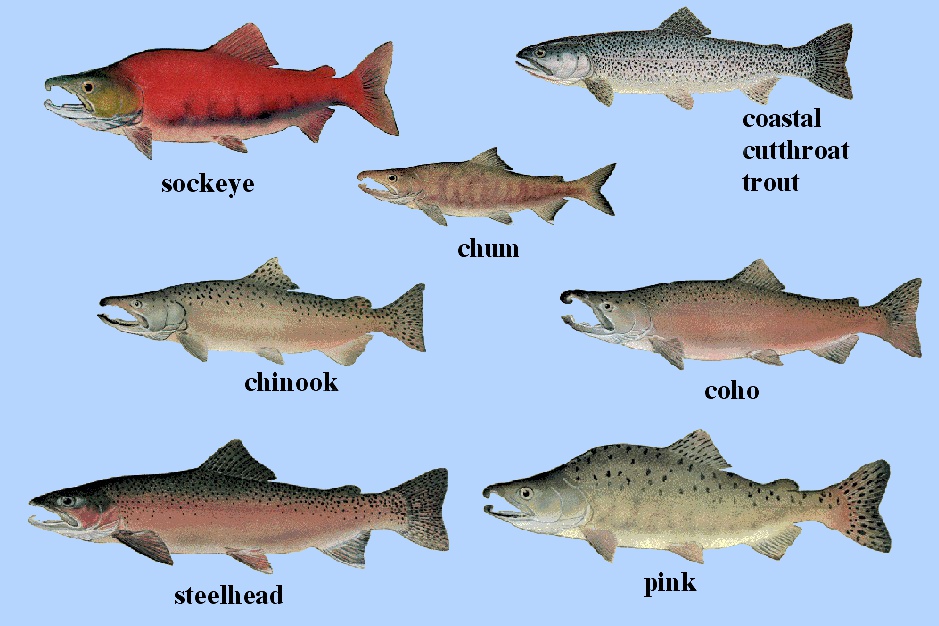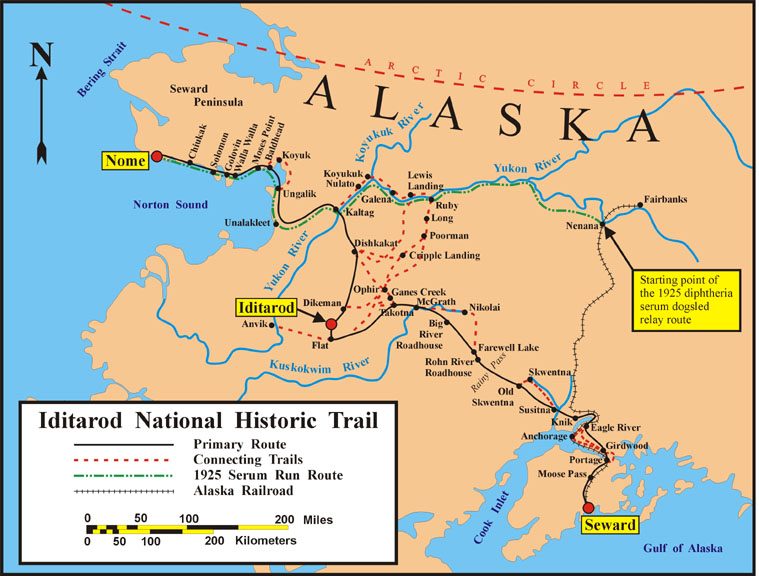|
Deg Xitʼan
Deg Hitʼan () (also Deg Xitʼan, Deg Hitan, Degexitʼan, Kaiyuhkhotana, ) is a group of Athabaskan peoples in Alaska. Their native language is called Deg Xinag. They reside in Alaska along the Anvik River in Anvik, along the Innoko River in Shageluk, and at Holy Cross along the lower Yukon River. The Deg Hitʼan are members of the federally recognized Alaska Native tribes of Anvik Village, Shageluk Native Village, and Holy Cross Village. The Iditarod Trail's antecedents were the native trails of the Dena'ina and Deg Hitʼan Athabaskan Indians and the Inupiaq Eskimos. Their neighbors are other Athabaskan-speaking and Yupik Eskimo peoples: Yup'ik (west and south), Holikachuk (north), Upper Kuskokwim (north and east), and Dena'ina (south). Name The autonyms used by this group of Athabaskan people are: Deg Xitʼan (local people) and Deg Xinag (local language).Beth R. Leonard 2007Deg Xinag oral traditions: reconnecting indigenous language and. education through traditi ... [...More Info...] [...Related Items...] OR: [Wikipedia] [Google] [Baidu] |
Field Museum Of Natural History
The Field Museum of Natural History (FMNH), also known as The Field Museum, is a natural history museum in Chicago, Illinois, and is one of the largest such museums in the world. The museum is popular for the size and quality of its educational and scientific programs, and its extensive scientific sample (material), specimen and Cultural artifact, artifact collections. The permanent exhibitions, which attract up to 2 million visitors annually, include fossils, current cultures from around the world, and interactive programming demonstrating today's urgent conservation (ethic), conservation needs. The museum is named in honor of its first major Benefactor (law), benefactor, Marshall Field, the Department store, department-store magnate. The museum and its collections originated from the 1893 World's Columbian Exposition and the artifacts displayed at the fair. The museum maintains a temporary exhibition program of traveling shows as well as in-house produced topical exhibitions. ... [...More Info...] [...Related Items...] OR: [Wikipedia] [Google] [Baidu] |
Holy Cross, Alaska
Holy Cross (; ) is a city in Yukon-Koyukuk Census Area, Alaska, United States. At the 2010 census the population was 178, down from 227 in 2000. Geography Holy Cross is located at (62.198048, -159.773418). According to the United States Census Bureau, the city has a total area of , of which, of it is land and of it (16.51%) is water. Demographics Holy Cross first appeared on the 1880 U.S. Census as the unincorporated Inuit village of "Askhomute." In 1890, it was reported as "Kozerevsky." In 1900 and 1910, it was called "Koserefsky." It did not report on the 1920 U.S. Census. In 1930, it was then returned as Holy Cross for the first time. It was formally incorporated in 1968. As of the census of 2000, there were 227 people, 64 households, and 49 families residing in the city. The population density was . There were 81 housing units at an average density of . The racial makeup of the city was 3.52% White and 96.48% Native American. Of the 64 households, 43.8% had chil ... [...More Info...] [...Related Items...] OR: [Wikipedia] [Google] [Baidu] |
Postbase
In linguistics, a postbase is a special kind of grammatical suffixing morpheme that is suffixed to a base. It is mostly found in Eskimo–Aleut languages and Formosan Languages. Postbases differ from most other affixes in that they usually carry a much more salient semantic content than affixes in other languages and are semantically more akin to verb A verb is a word that generally conveys an action (''bring'', ''read'', ''walk'', ''run'', ''learn''), an occurrence (''happen'', ''become''), or a state of being (''be'', ''exist'', ''stand''). In the usual description of English, the basic f ...s. In Eskimo–Aleut languages meanings such as "to have", "to want", "to think", "to say" are usually expressed by postbases. External links Iñupiaq Postbases -1 *Dictionary of Utku ... [...More Info...] [...Related Items...] OR: [Wikipedia] [Google] [Baidu] |
Louse
Louse (: lice) is the common name for any member of the infraorder Phthiraptera, which contains nearly 5,000 species of wingless parasitic insects. Phthiraptera was previously recognized as an order (biology), order, until a 2021 genetic study determined that they are a highly modified lineage of the order Psocodea, whose members are commonly known as booklice, barklice or barkflies. Lice are obligate parasites, living externally on warm-blooded Host (biology), hosts, which include every species of bird and mammal, except for monotremes, pangolins, and bats. Chewing lice live among the hairs or feathers of their host and feed on skin and debris, whereas sucking lice pierce the host's skin and feed on blood and other secretions. They usually spend their whole life on a single host, cementing their eggs, called Head louse#Eggs/Nits, nits, to hairs or feathers. The eggs hatch into Nymph (biology), nymphs, which moult three times before becoming fully grown, a process that takes a ... [...More Info...] [...Related Items...] OR: [Wikipedia] [Google] [Baidu] |
Indigenous Peoples Of The Americas
In the Americas, Indigenous peoples comprise the two continents' pre-Columbian inhabitants, as well as the ethnic groups that identify with them in the 15th century, as well as the ethnic groups that identify with the pre-Columbian population of the Americas as such. These populations exhibit significant diversity; some Indigenous peoples were historically hunter-gatherers, while others practiced agriculture and aquaculture. Various Indigenous societies developed complex social structures, including pre-contact monumental architecture, organized city, cities, city-states, chiefdoms, state (polity), states, monarchy, kingdoms, republics, confederation, confederacies, and empires. These societies possessed varying levels of knowledge in fields such as Pre-Columbian engineering in the Americas, engineering, Pre-Columbian architecture, architecture, mathematics, astronomy, History of writing, writing, physics, medicine, Pre-Columbian agriculture, agriculture, irrigation, geology, minin ... [...More Info...] [...Related Items...] OR: [Wikipedia] [Google] [Baidu] |
Central Alaskan Yup'ik Language
Central is an adjective usually referring to being in the center of some place or (mathematical) object. Central may also refer to: Directions and generalised locations * Central Africa, a region in the centre of Africa continent, also known as Middle Africa * Central America, a region in the centre of America continent * Central Asia, a region in the centre of Eurasian continent * Central Australia, a region of the Australian continent * Central Belt, an area in the centre of Scotland * Central Europe, a region of the European continent * Central London, the centre of London * Central Region (other) * Central United States, a region of the United States of America Specific locations Countries * Central African Republic, a country in Africa States and provinces * Blue Nile (state) or Central, a state in Sudan * Central Department, Paraguay * Central Province (Kenya) * Central Province (Papua New Guinea) * Central Province (Solomon Islands) * Central Provinc ... [...More Info...] [...Related Items...] OR: [Wikipedia] [Google] [Baidu] |
Exonym And Endonym
An endonym (also known as autonym ) is a common, name for a group of people, individual person, geographical place, language, or dialect, meaning that it is used inside a particular group or linguistic community to identify or designate themselves, their place of origin, or their language. An exonym (also known as xenonym ) is an established, ''non-native'' name for a group of people, individual person, geographical place, language, or dialect, meaning that it is used primarily outside the particular place inhabited by the group or linguistic community. Exonyms exist not only for historico-geographical reasons but also in consideration of difficulties when pronouncing foreign words, or from non-systematic attempts at transcribing into a different writing system. For instance, is the endonym for the country that is also known by the exonyms ''Germany'' and in English and Italian, respectively, and in Spanish and French, respectively, in Polish, and and in Finni ... [...More Info...] [...Related Items...] OR: [Wikipedia] [Google] [Baidu] |
Upper Kuskokwim People
The Upper Kuskokwim people or Upper Kuskokwim Athabaskans, Upper Kuskokwim Athabascans ( own native name ), and historically Kolchan, Goltsan, Tundra Kolosh, and McGrath Ingalik are an Alaskan Athabaskan people of the Athabaskan-speaking ethnolinguistic group. First delineation of this ethnolinguistic group was described by anthropologist Edward Howard Hosley (who has specialized in the study of Alaskan Athabaskan cultures) in 1968, as Kolchan. According to Hosley, "Nevertheless, as a group possessing a history and a culture differing from those of its neighbours, the Kolchan deserve to be recognized as an independent group of Alaskan Athapaskans."Edward Hosley 1968The Kolchan: delineation of a new Northern Athapaskan Indian group They are the original inhabitants of the Upper Kuskokwim River villages of Nikolai, Telida, and McGrath, Alaska. About 25 of a total of 100 Upper Kuskokwim people still speak the language. They speak a distinct Athabaskan language (as Upper Kuskokwim ... [...More Info...] [...Related Items...] OR: [Wikipedia] [Google] [Baidu] |
Holikachuk People
Holikachuk (also Innoko, Organized Village of Grayling, Innoka-khotana, Tlëgon-khotana) are a Yupikized Alaska Native Athabaskan people of the Athabaskan-speaking ethnolinguistic group to western Alaska. Their native territory includes the area surrounding the middle and upper Innoko River. Later in 1963 they moved to Grayling on the Yukon River. The Holikachuk call themselves ''Doogh Hit’an'' (). The name ''Holikachuk'' is derived from the name (in the Holikachuk language) of a village in native Holikachuk territory. The Holikachuk have been neglected by anthropologists, resulting in little documentation (both published and unpublished). In the past they have erroneously (or out of convenience) been grouped with the Koyukon. The peoples neighboring the Holikachuk are in the north the Yup'ik The Yupʼik or Yupiaq (sg & pl) and Yupiit or Yupiat (pl), also Central Alaskan Yupʼik, Central Yupʼik, Alaskan Yupʼik ( own name ''Yupʼik'' sg ''Yupiik'' dual ''Yupiit' ... [...More Info...] [...Related Items...] OR: [Wikipedia] [Google] [Baidu] |
Iditarod Trail
The Iditarod Trail, also known historically as the Seward-to-Nome Trail, is a thousand-plus mile (1,600 km) historic and contemporary trail system in the US state of Alaska. The trail began as a composite of trails established by Alaska natives, Alaskan native peoples. Its route crossed several mountain ranges and valleys and passed through numerous historical settlements en route from Seward, Alaska, Seward to Nome, Alaska, Nome. The Nome Gold Rush, discovery of gold around Nome brought thousands of people over this route beginning in 1908. Roadhouses for people and dog barns sprang up every 20 or so miles. By 1918 World War I and the lack of 'gold fever' resulted in far less travel. The trail might have been forgotten except for the 1925 Diphtheria, diphtheria outbreak in Nome. By making use of Dog sled, dog sleds, twenty drivers and teams carried the life-saving serum in 127 hours. Today, the Iditarod Trail Sled Dog Race serves to commemorate the part the trail and its ... [...More Info...] [...Related Items...] OR: [Wikipedia] [Google] [Baidu] |





